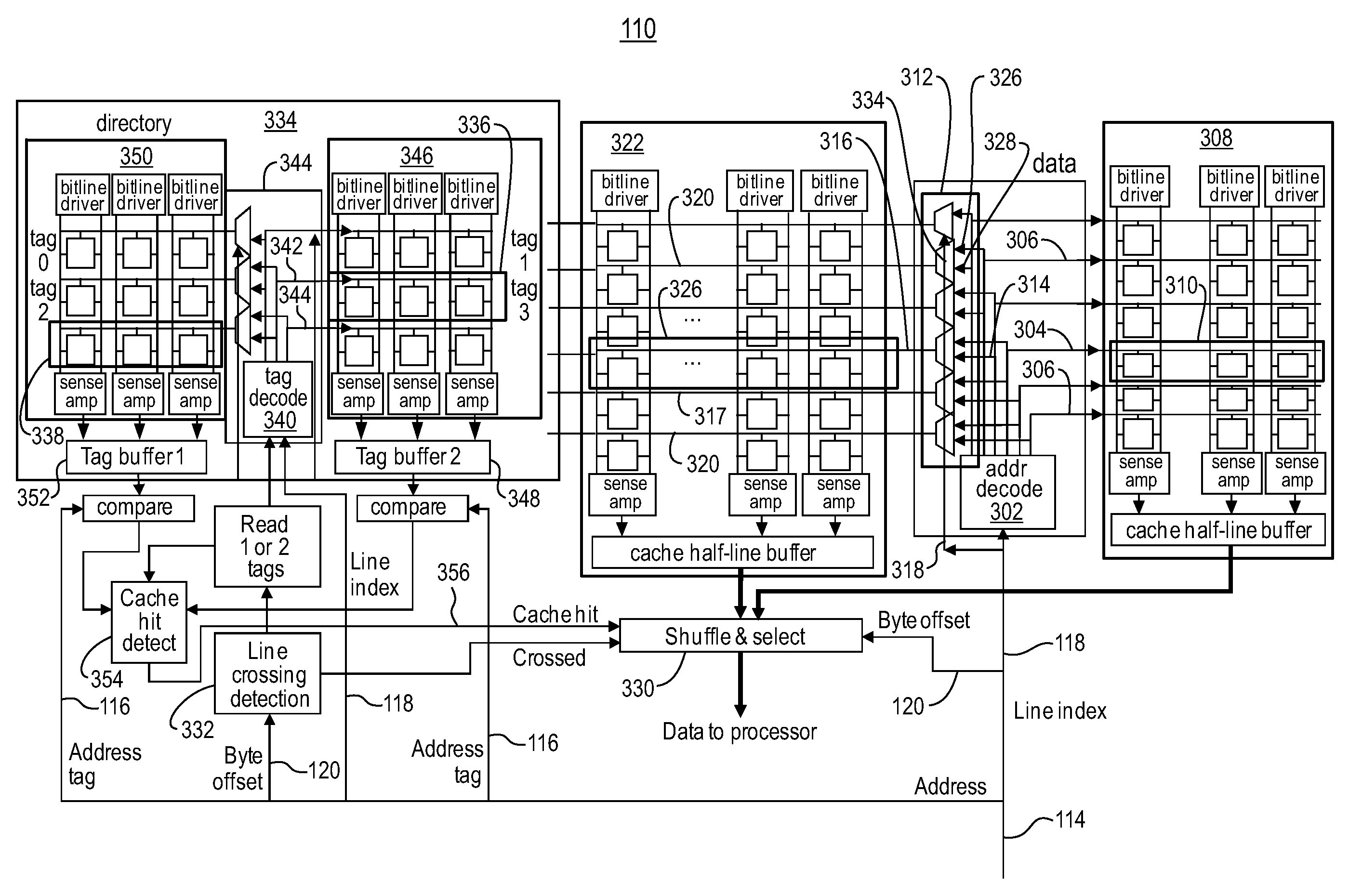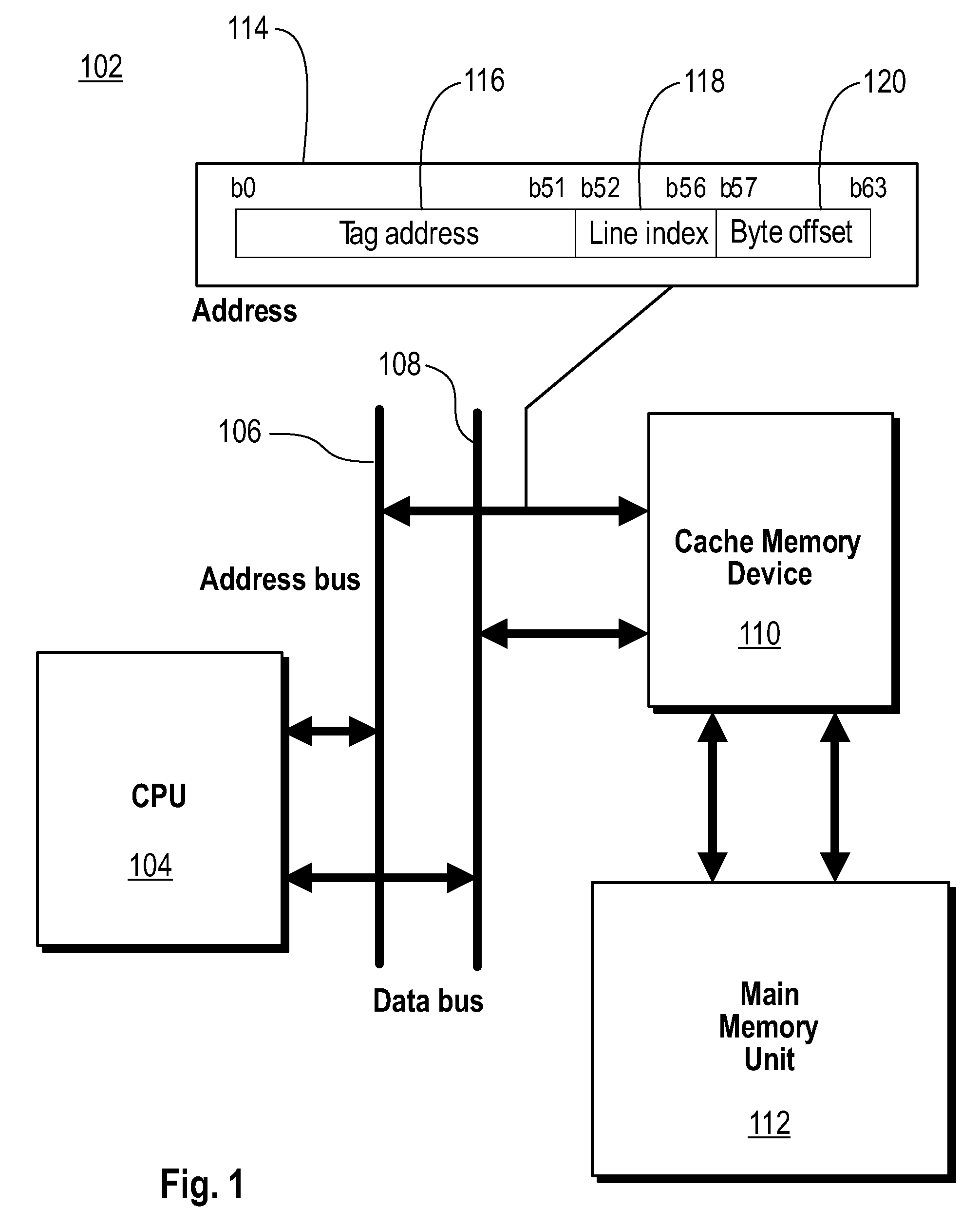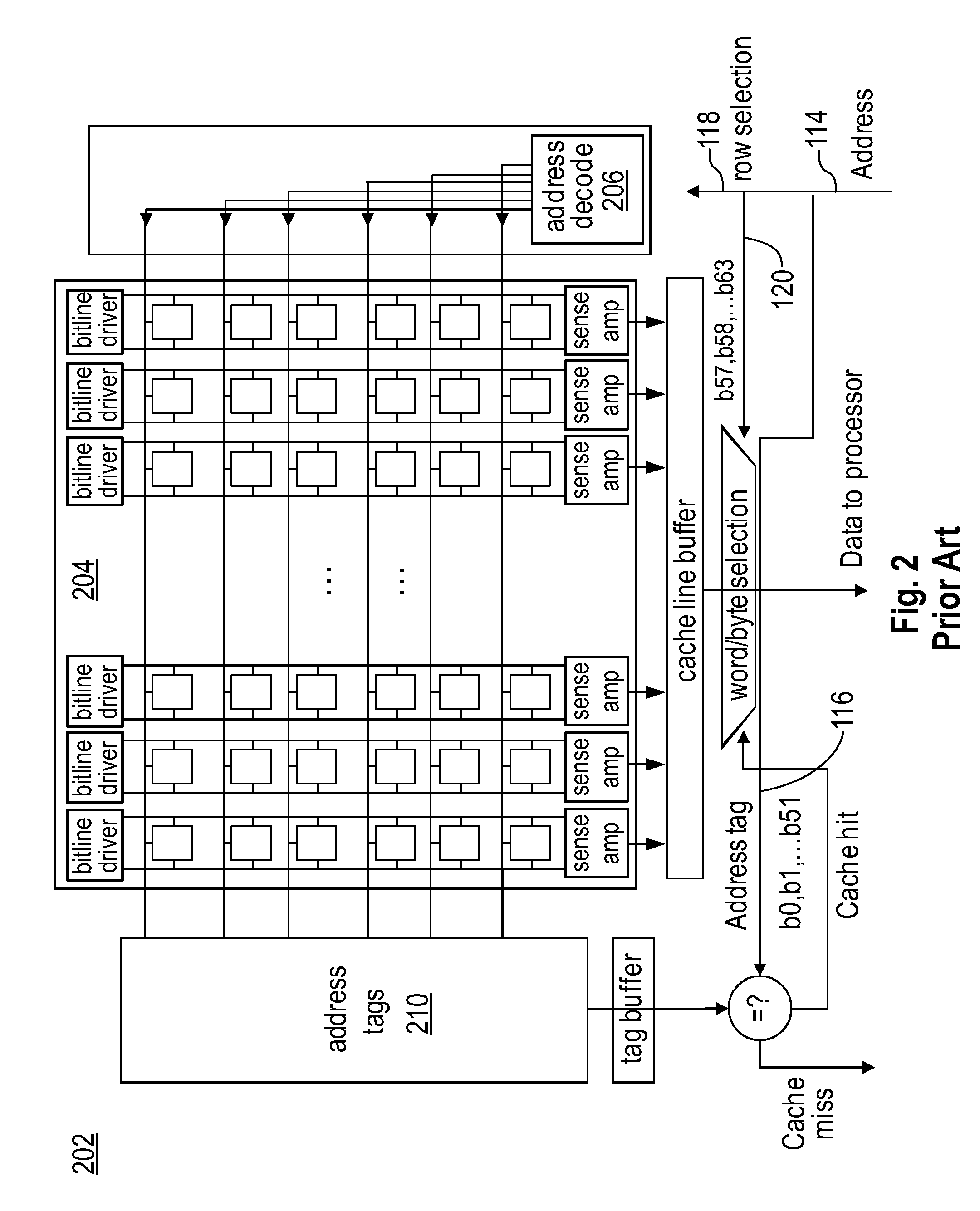High performance unaligned cache access
a cache access and high-performance technology, applied in the field of cache memory, can solve the problems of reducing the performance of the processor core, the performance penalty of this approach is much lower, and the compiler cannot determine ahead of time a data address
- Summary
- Abstract
- Description
- Claims
- Application Information
AI Technical Summary
Problems solved by technology
Method used
Image
Examples
Embodiment Construction
[0023]The present invention is described with reference to embodiments of the invention. Throughout the description of the invention reference is made to FIGS. 1-12.
[0024]Turning to FIG. 1, an example system environment 102 contemplated by the present invention is shown. The environment 102 includes one or more central processing units 104 coupled to an address bus 106 and a data bus 108. A cache memory device 110 is also coupled to the address bus 106 and the data bus 118.
[0025]The CPU 104 requests data stored in cache memory by issuing a data address 114 on the address bus 106. The cache memory device 110 reads the data address 114 and checks if the requested data is stored in its memory. If the requested data is stored in the cache, it is referred to as a cache hit. During a cache hit, the cache memory device 110 returns the requested data to the CPU 104 via the data bus 108.
[0026]On the other hand, if the requested data is not stored within the cache memory device 110, it is ref...
PUM
 Login to View More
Login to View More Abstract
Description
Claims
Application Information
 Login to View More
Login to View More - R&D
- Intellectual Property
- Life Sciences
- Materials
- Tech Scout
- Unparalleled Data Quality
- Higher Quality Content
- 60% Fewer Hallucinations
Browse by: Latest US Patents, China's latest patents, Technical Efficacy Thesaurus, Application Domain, Technology Topic, Popular Technical Reports.
© 2025 PatSnap. All rights reserved.Legal|Privacy policy|Modern Slavery Act Transparency Statement|Sitemap|About US| Contact US: help@patsnap.com



